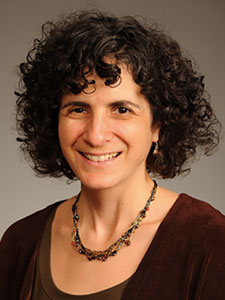
DFMCH senior scientist Rachel Grob, MA, PhD, helped developed a new patient narrative elicitation protocol that supplements the CAHPS® Clinician & Group Survey.
Rachel Grob, MA, PhD, a senior scientist in the UW Department of Family Medicine and Community Health, has helped develop a new national survey protocol that may more robustly capture patients’ experiences with their health care providers.
Dr. Grob, who is also the director of national initiatives for the UW-Madison Center for Patient Partnerships, created the “CAHPS Patient Narrative Elicitation Protocol” with colleagues from the Yale University and RAND Corporation CAHPS Reports Team. (The team’s methods are summarized in a recent paper published in Health Services Research ).
The beta version of the protocol was made publicly available by the Agency for Healthcare Research and Quality (AHRQ) in December 2016.
Five Open-Ended Questions
The adult version of the protocol consists of five questions designed to lead patients through the telling of their health care stories in a structured sequence, thereby eliciting a clear and comprehensive portrayal of their experience. (The child version of the protocol has six questions.)
Although the protocol can be administered on its own, it’s intended to supplement the CAHPS® Clinician & Group Survey (CG-CAHPS), the standardized survey tool that health care organizations nationwide use to collect quality data.
The difference is that while CG-CAHPS consists of closed-ended questions, the new protocol consists of open-ended questions.
“What we didn’t have was a way of hearing from patients in their own words,” Dr. Grob explained. She added that the team used a scientific process to develop and test the new protocol’s questions, so that it would capture patient narratives that were “complete, balanced, meaningful and representative.”
The five questions are:
- What are the most important things that you look for in a healthcare provider and the staff in his or her office?
- When you think about the things that are most important to you, how do your provider and the staff in his or her office measure up?
- Now we’d like to focus on anything that has gone well in your experiences in the last 6 months with your provider and the staff in his or her office. Please explain what happened, how it happened, and how it felt to you.
- Next we’d like to focus on any experiences in the last 6 months with your provider and the staff in his or her office that you wish had gone differently. Please explain what happened, how it happened, and how it felt to you.
- Please describe how you and your provider relate to and interact with each other.
A Win for Patients, Providers and the System
Health care groups in California and Massachusetts have already used the beta protocol, and are beginning to use the data it yields for primary-care quality improvement projects. Dr. Grob and her colleagues are working to identify other organizations that could serve as early adopters.
According to Dr. Grob, the new protocol is valuable in three distinct ways. Specifically:
- It provides concrete, actionable examples of aspects of care that are measured on closed-ended surveys;
- It highlights additional sub-categories of experience in areas such as access, communication, office staff and coordination that are not currently measured directly on surveys; and
- It highlights domains of care that are important to patients but not included on existing CG-CAHPS surveys.
“[This protocol] yields textured descriptions of things that you can’t learn from a closed-ended survey alone,” Dr. Grob reflected.
“It elicits narratives about care in patients’ own words,” she continued. “This makes patients part of the never-ending quality improvement that’s at the heart of any primary care endeavor. I think it’s a big win for patients, providers and the system alike.”
To learn more, visit the CAHPS Patient Narrative Elicitation Protocol page at AHRQ
Published: March 2017
